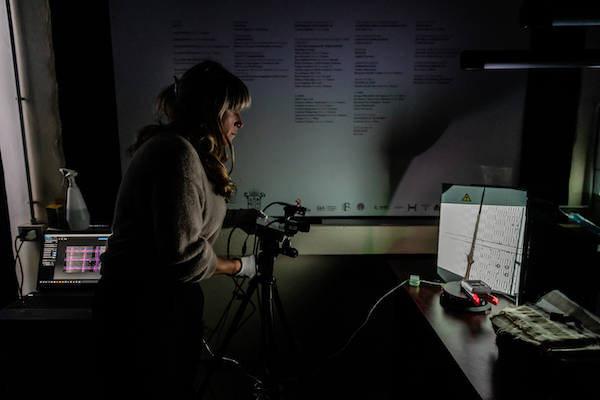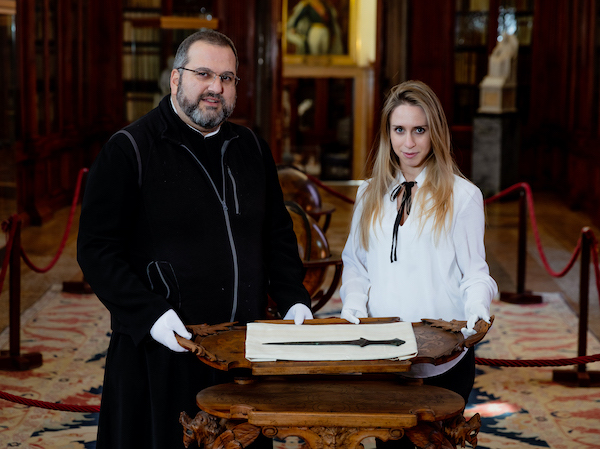Vittoria Dall’Armellina was visiting the San Lazzaro degli Armeni Museum in Venice, when a small sword, placed in a display cabinet with other medieval items, caught her eye.
The clever Ca’ Foscari Ph.D. student thought the weapon she had spotted didn’t look like a medieval artifact, but a much older sword, similar to those she had already met in her studies.
First her master’s degree thesis and then her Ph.D. project, both focused on the origins and evolution of swords in the Ancient Near East.
The sword did in fact look very similar to those found in the Royal Palace of Arslantepe (Eastern Anatolia), dating back to five thousand years ago and considered to be the oldest swords in the world.
Following this discovery, which had quite the resonance in the archeological world, the same type of sword - coming from the Sivas region - was found inside the Tokat Museum (Turkey). Indeed, this weapon shows quite a few similarities with the San Lazzaro one.
After confirming that the sword had never been recorded in the catalog of Near East antique objects belonging to the Saint Lazarus Island museum and having received the approval of her Ph.D. supervisor Elena Rova, professor of Archeology at the Department of Humanities, Dall’Armellina carried forward with the investigation to assess whether her intuition was correct and in doing so, she managed to shed light on many puzzling aspects of the discovery.
The scientific analysis confirmed her suspects: the sword doesn’t just resemble the most ancient weapons in the world, but it was also forged around the same time, around the year 3000 b.C..
An Anatolian weapon casually reappears in Venice, resurfacing from the darkness that engulfed it for millennia.
But what’s its story? How did it come to the monastery and what could have been its ties with the Armenian monks? Who did it belong to and which far away lands had he explored? Who wielded the weapon? Or was somebody buried with it?
To answer these questions, the researcher employed the help of a precious collaborator: Father Serafino Jamourlian, who, after searching through the museum’s archives, contributed to reveal part of this very long story.
THE SWORD’S JOURNEY
The sword travels from Trebizond to Venice in the second half of the 19th century, a gift from Yervant Khorasandjian, an art dealer and collector.
This first transfer is attested by an envelope which contains a worn-out slip of paper written in Armenian that talks about a donation (there’s also a list of items) to Father Ghevond (Leonzio) Alishan. It is also specified that the findings were retrieved near Trebizond, in a place called Kavak.
We also know that Ghevond Alishan, a famous poet, writer, and friend of John Ruskin, Mekhitarist monk, and zealous archeology scholar, died in Venice in 1901. The sequence of events likely unfolded in the last decades of the 19th century.
The card that came with the sword served as a guiding light to retrace its journey to Venice, providing the researchers with important information on its Anatolian origins.
THE SWORD’S ORIGINS
The analysis of the metal composition was carried out in collaboration with Ivana Angelini, professor at the University of Padua, and the CIBA, an interdepartmental centre for the research, study, and conservation of archeological, historical and artistic heritage.
The Saint Lazarus Island sword, like the rest of similar items, turned out to be made of Arsenical bronze, an alloy frequently used before the widespread diffusion of bronze (an alloy consisting of copper and tin). This piece of data and the strong resemblance to the twin swords of Arslantepe, retrieved in a well documented context, have allowed the experts to determine that the sword dates back to around the end of 4th and the beginning of the 3rd century b.C., as well as confirming its affinity to a very rare category.
According to the latest studies, this type of sword was common in a relatively small region in Eastern Anatolia, between the high course of the Euphrat and the Southern shore of the Black Sea. The analysis of trace elements could further pinpoint the exact source of the metal.
The sword, contrary to some of the Arslantepe specimens, is not decorated: there are no visible inscriptions, embellishments or distinctive features. Due to the less than optimal conservation conditions, it was not possible to detect any traces of usage.
Consequently, the sword could have been a real offensive weapon that was actually used in combat, a ceremonial sword or part of some grave goods.
A likely hipotesis is that it was part of a burial -casually retrieved by some local townsfolk - whose grave goods where then scattered, as it often happened until a few year ago.
Indeed, the sword was forged during a period of time in which Anatolian and Caucasian burials began to be adorned with a rich array of grave goods, with weapons and jewels, a sign of the emergence of a new warrior elite.
The sword’s real story is still shrouded in mystery - the scholars now have the task to finally shed light on it.










